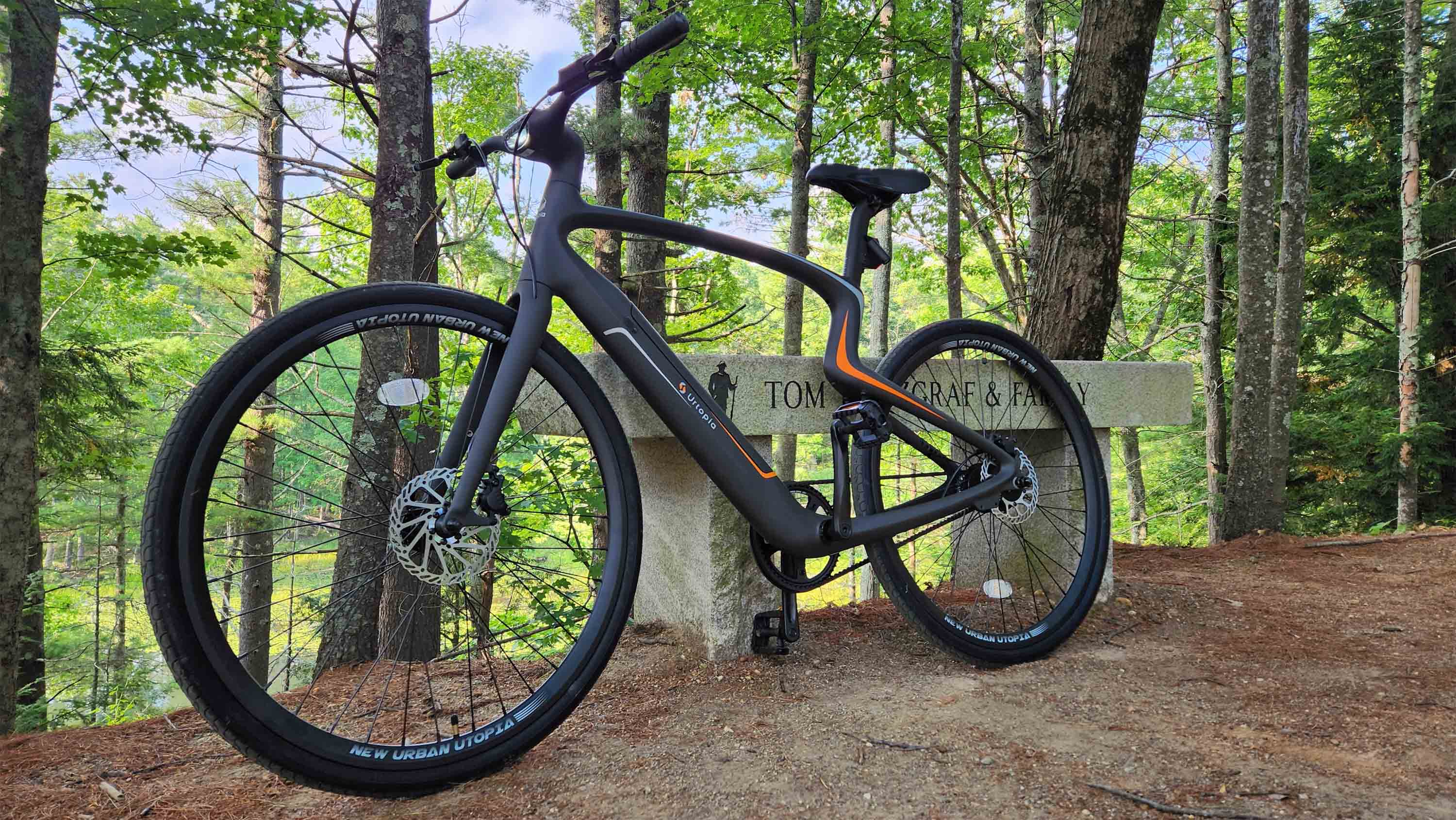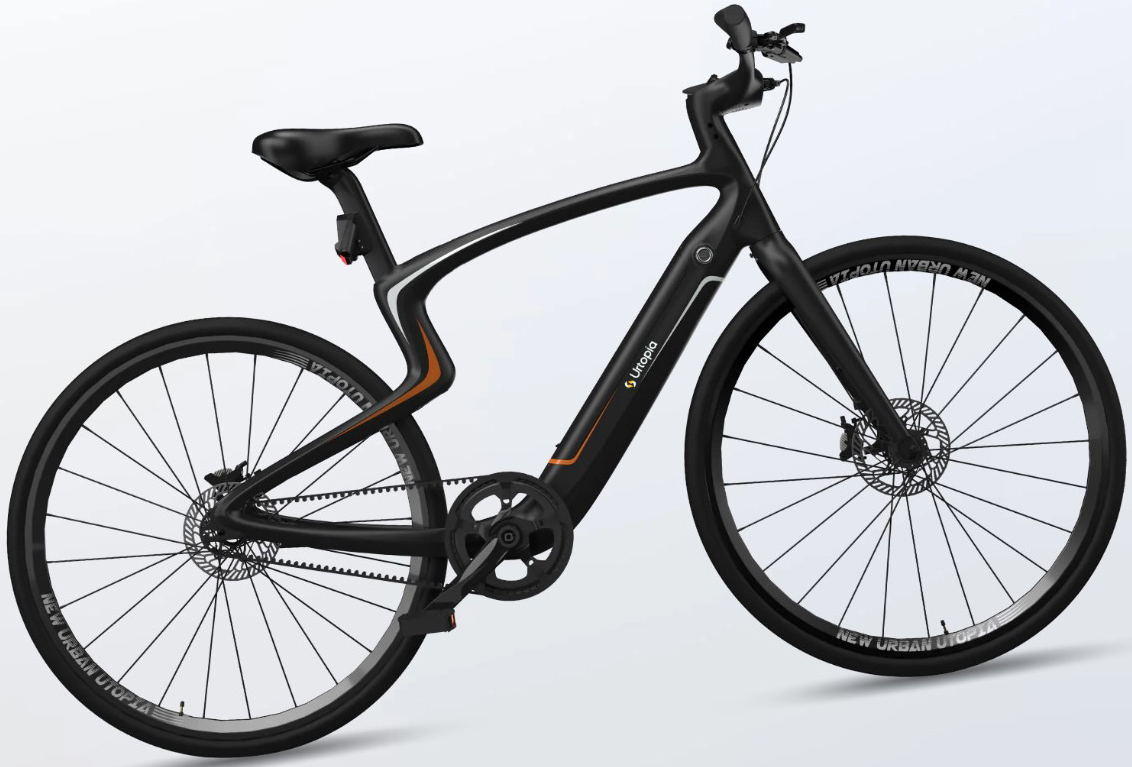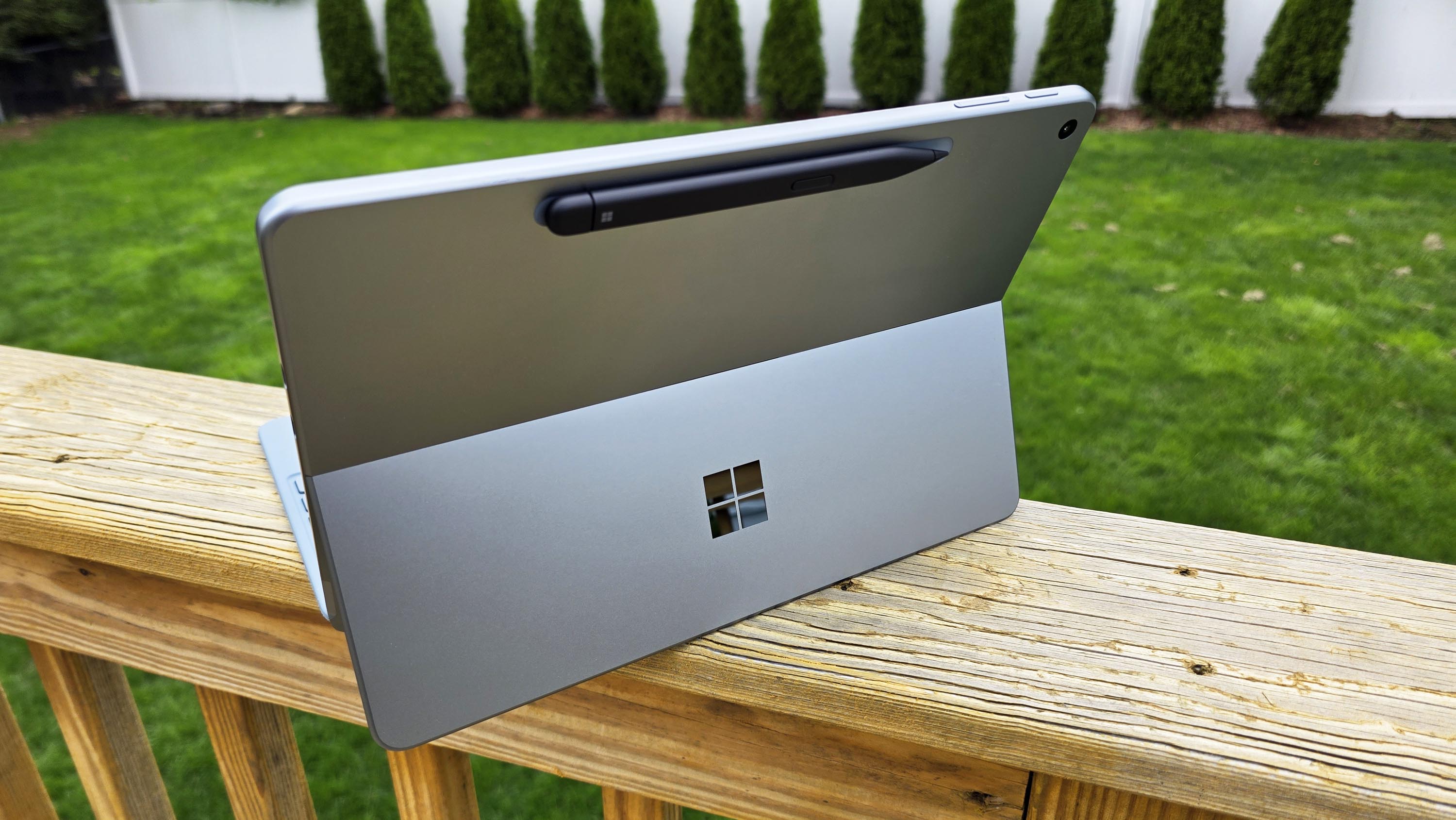Windows Central Verdict
Urtopia packs a computer ("smartbar"), GPS, 4G LTE, and an app all with a peddle-assisted ultra-light carbon fiber frame making it the most technologically advanced bike you can buy today. If you're into tech and want to get outside, this is your ride.
Pros
- +
Super light frame (33lbs)
- +
Smartbar, GPS, LTE, blinkers, lights, and tons of features
- +
Competitively priced
- +
Very comfortable
- +
Easy setup and assembly
Cons
- -
Expensive for average people
- -
Frame scratches easily
- -
New, untested company
Why you can trust Windows Central
This review is unconventional for Windows Central, but there is some overlap for those who love technology and always-connected 4G LTE devices, like me. When Urtopia offered to send me its new e-bike, I rolled my eyes until I read the specs and what it could do. I was impressed and had no idea that so much could be tucked into a lightweight e-bike while also being absurdly simple to use.
I’ve been using the Urtopia Carbon E-bike for the last month, and if you need an excellent road city bike and love gadgets, I can easily recommend it. It’s simply fun, cool, and innovative.
It’s the first and likely the last e-bike you’ll ever need.
Urtopia Carbon E-bike: Price, specs, and availability
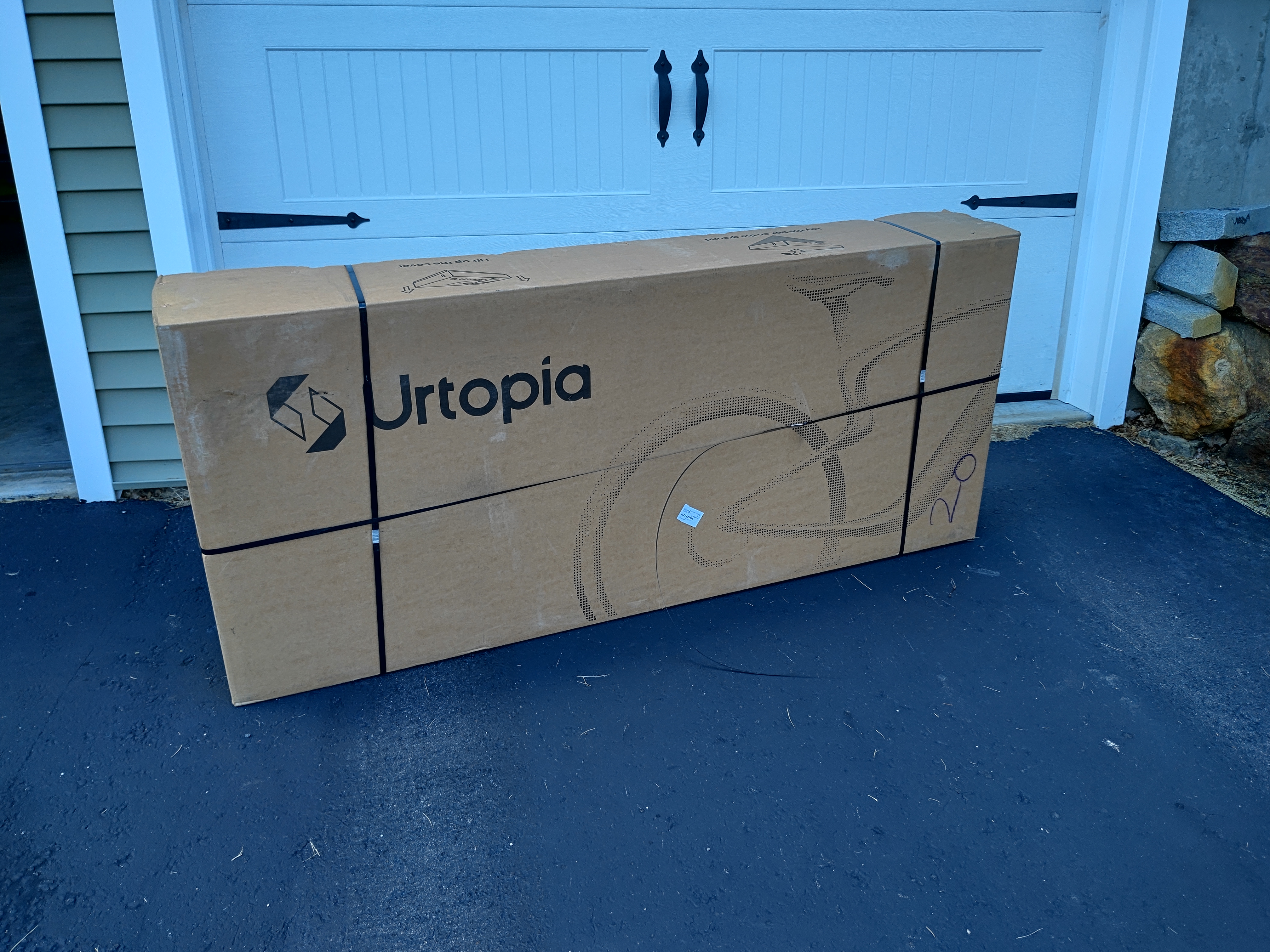
The Urtopia Carbon E-bike is produced by Urtopia, based out of Hong Kong, with manufacturing in China. The company is new and began crowdsourcing for its carbon e-bike in 2021 via IndieGoGo, but you can now purchase it outright from its website for $2,799.
There is a 2-year warranty on the bike and components (except wear and tear) and a 14-day free return period.
Urtopia has teamed up with numerous regional bicycle shops in California, New York, and other states where you can see one in person and test-ride it. More shops are expected to sign on as well.
The company ships the Urtopia Carbon E-bike to the United States and Germany, with more markets to follow. The total shipping weight of the bike, packaging and support materials is 64lbs (29kg), although the bike itself is only 33lbs (15kg) due to most of the frame being carbon fiber.
There are three color choices to choose from including Sirius (used here), Lyra (nearly all black), and Midnight in Paris (the most colorful).
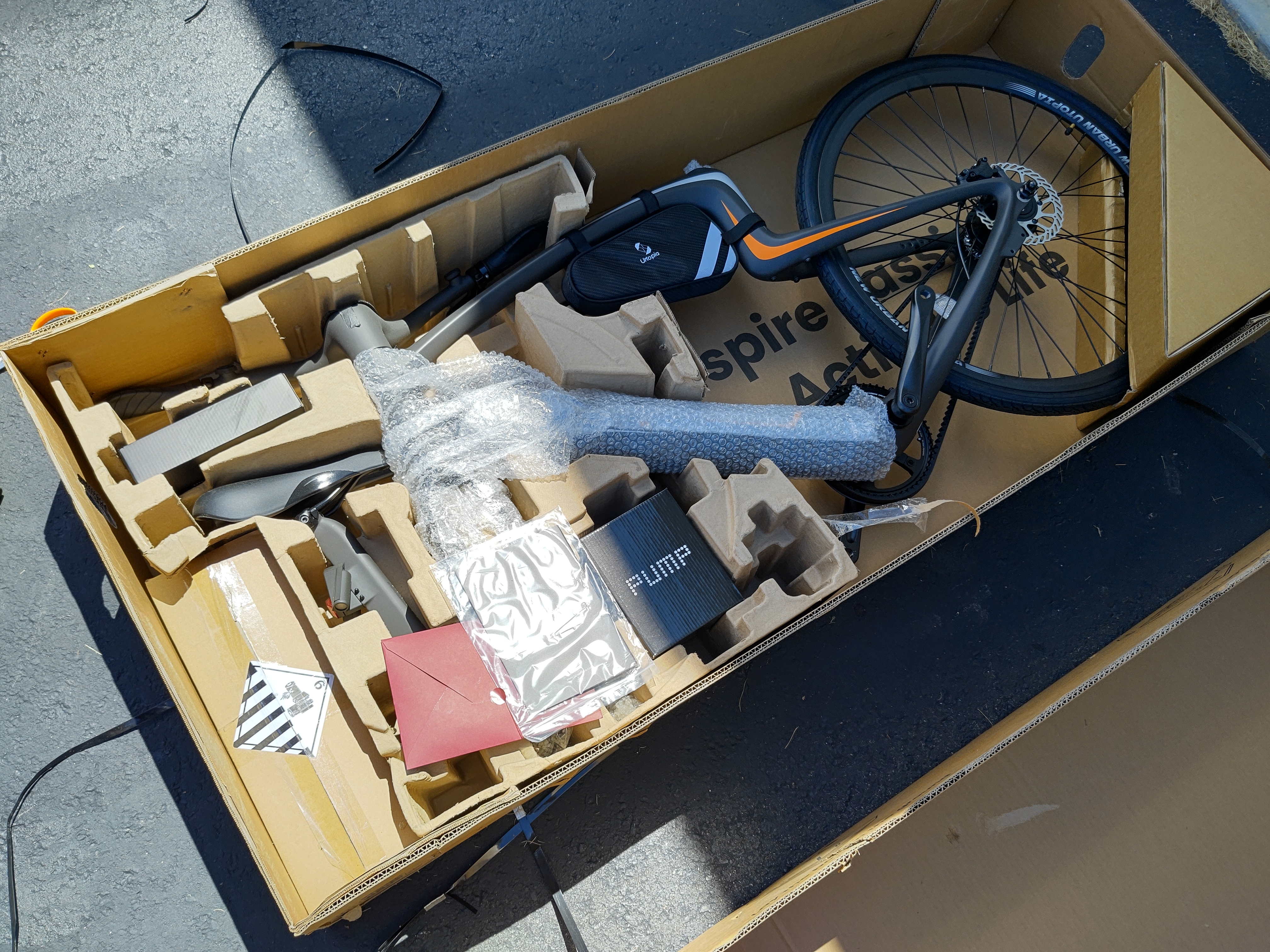
Being a street/urban bike, the front fork is rigid with no shocks and can handle a total rider weight of 240lbs (110kg). It has a Class 1 e-bike classification.
The motor is a 250-watt rear-hub single-gear Gates Carbon belt drive with a maximum speed of 20mph (32km) in the US and 16mph (25.7km) in the EU. The battery is a removable 36V 10Ah, 360Wh from Samsung that also locks in place.
Braking of the Kenda Kwest 700 x 35c puncture-resistant tires is handled by front and rear dual-piston hydraulic disc brakes.
The range of the Urtopia Carbon E-bike is 30 to 80 miles depending on the speed of the motor used for travel. The total charge time is 2.5 hours.
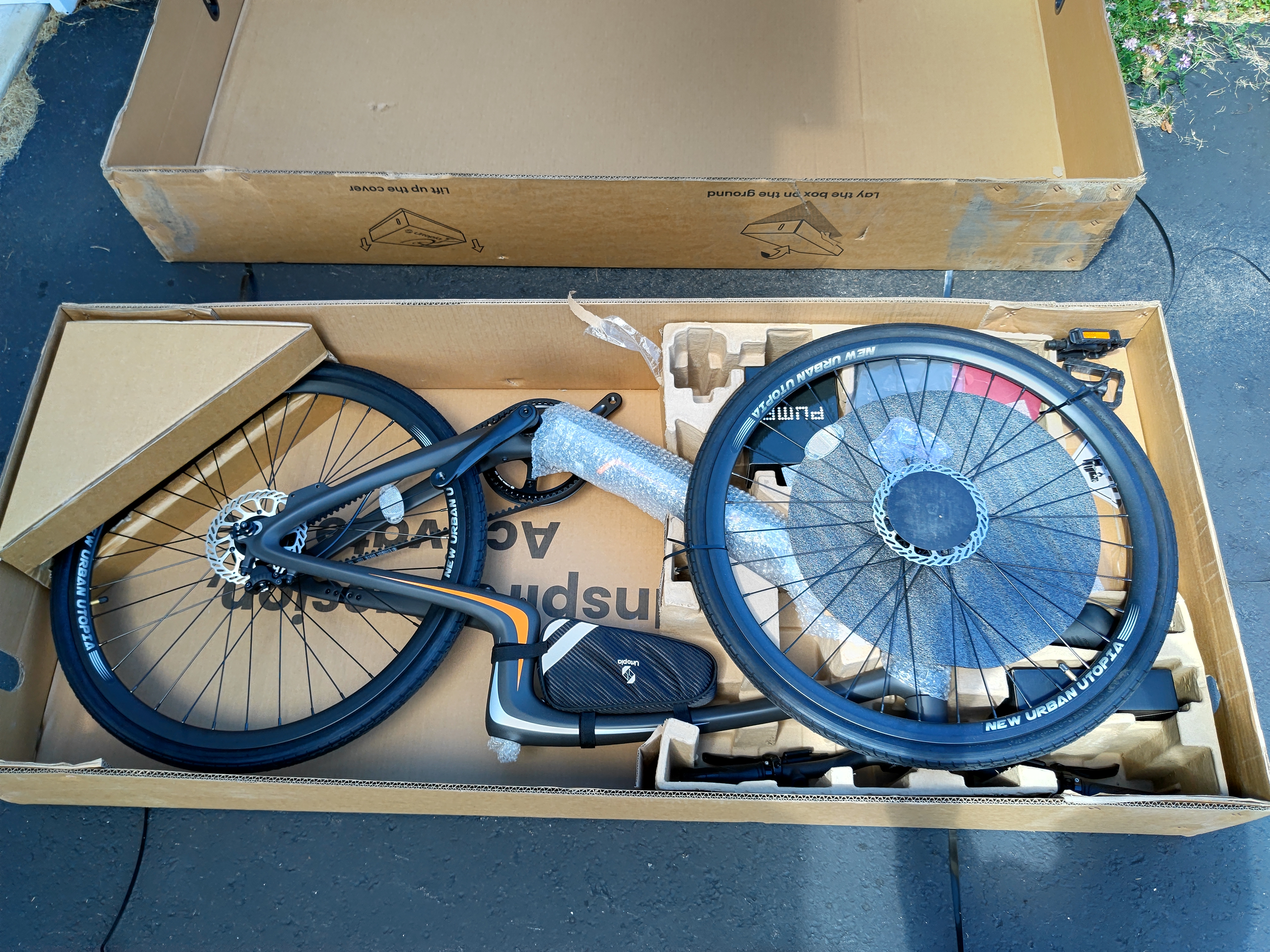
The built-in smart headset houses a dot-matrix display, a 3W speaker, dual microphones, a front 100-lumen StVZO headlight, and vibration motors (for alerts).
Safety features include GPS tracking (Find My Bike), movement alerts (Alarm), thumbprint unlock, a digital bell, low battery alert, tail light with projected turn indicator lights, and a locking battery pack.
Software, including firmware updates, occur over local Wi-Fi and are mediated by the Urtopia app available on iOS and Android. Users get a free year of eSIM always-connected service with purchase, after which it costs $29 per year.
The model we reviewed is one of the latest versions with multiple revisions to the hardware, including a brighter dot-matrix display, louder speakers, and better-tuned microphones.
Urtopia Carbon E-bike: What I like
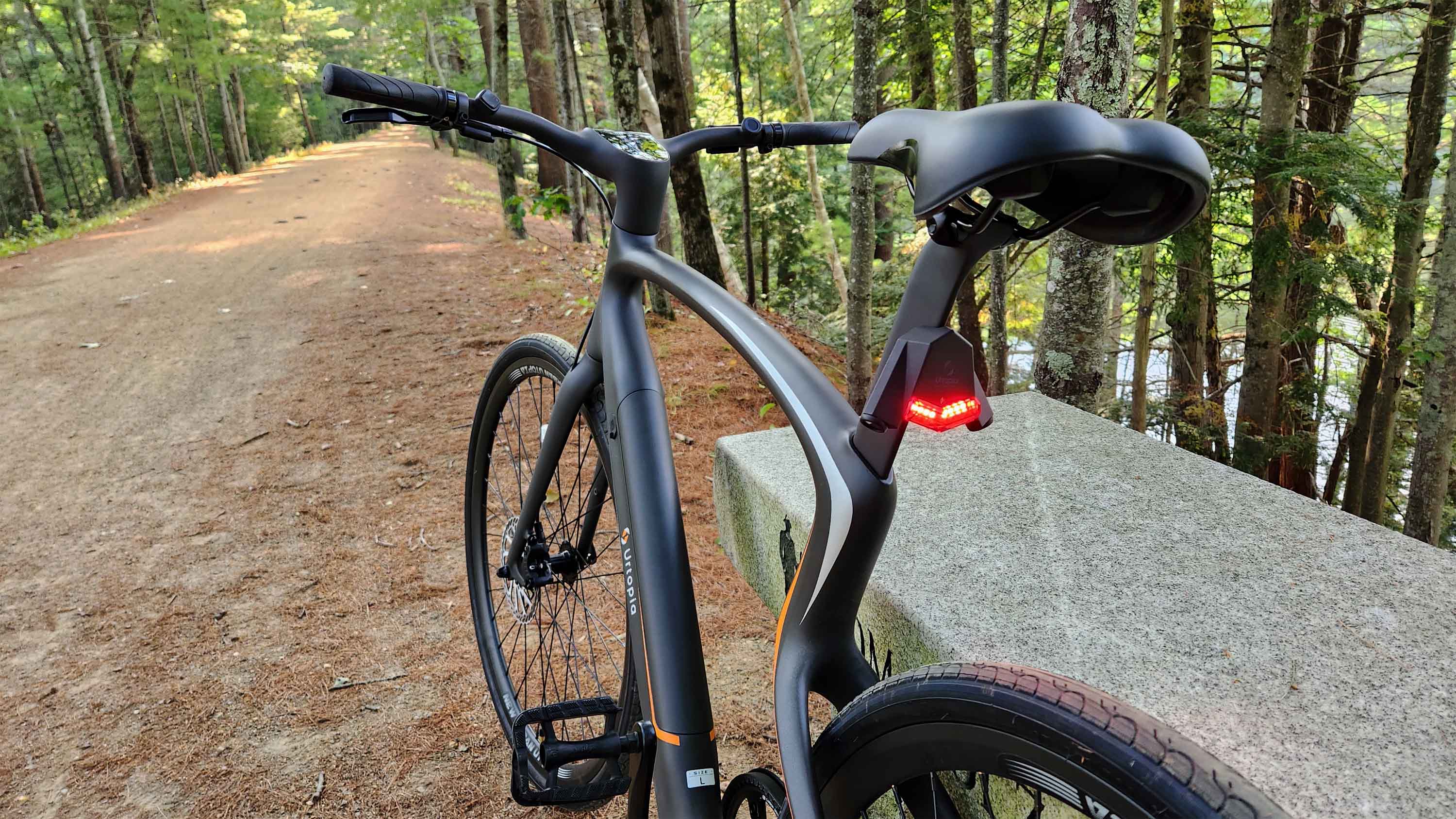
Looking at the Urtopia and this bike certainly looks unique. In fact, it was designed by former BMW I series designer Mathis Heller. He reportedly found inspiration for the design via a Möbius strip (a mathematical object with a non-orientable surface).
Getting a bike “in the mail” is always an experience, but Urtopia ships the carbon e-bike 90 percent already assembled. Even the FedEx shippers were shocked at how light the box was when removing it from the truck, as e-bikes can range up to 70lbs (31.7kg).
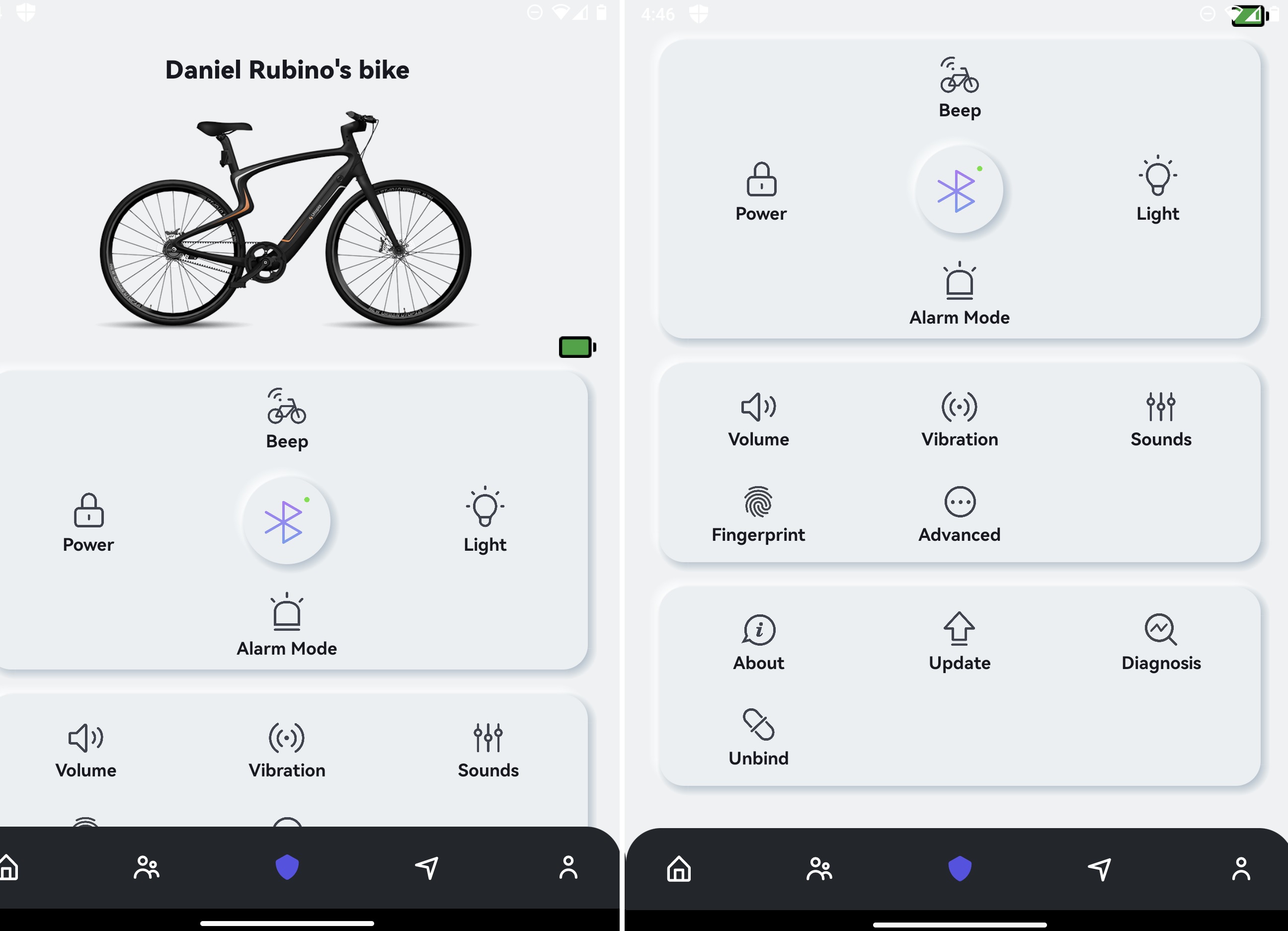
What minor assembly there was assisted by an easy-to-follow how-to video on Urtopia’s website, and it took me around 25 minutes to get it finalized. Everything you need is included in the box, including a small tire pump.
Urtopia recommends downloading its app, where you can create an account and pair the bike to it via a generated QR code on the bike’s dot-matrix display. Once connected, you can link the bike to your local Wi-Fi network for software and firmware updates, of which I have already had two since getting the bike in July.

The next step is registering your thumbprint, which is integrated into the power button to turn on the bike. Without it, you could still ride away with the bike, but nothing will work on it, especially the pedal-assist system.
Powering on the Urtopia, you get a pleasant chime, and the screen lights up, indicating the current speed and level of pedal assist you have engaged. Zero is off, where you can ride Urtopia like a standard, gearless bike. Next are levels 1 through 3, which increase the assistance dramatically. Finally, there is a level 4 “Turbo” mode, where the cycle takes off with little pedaling.
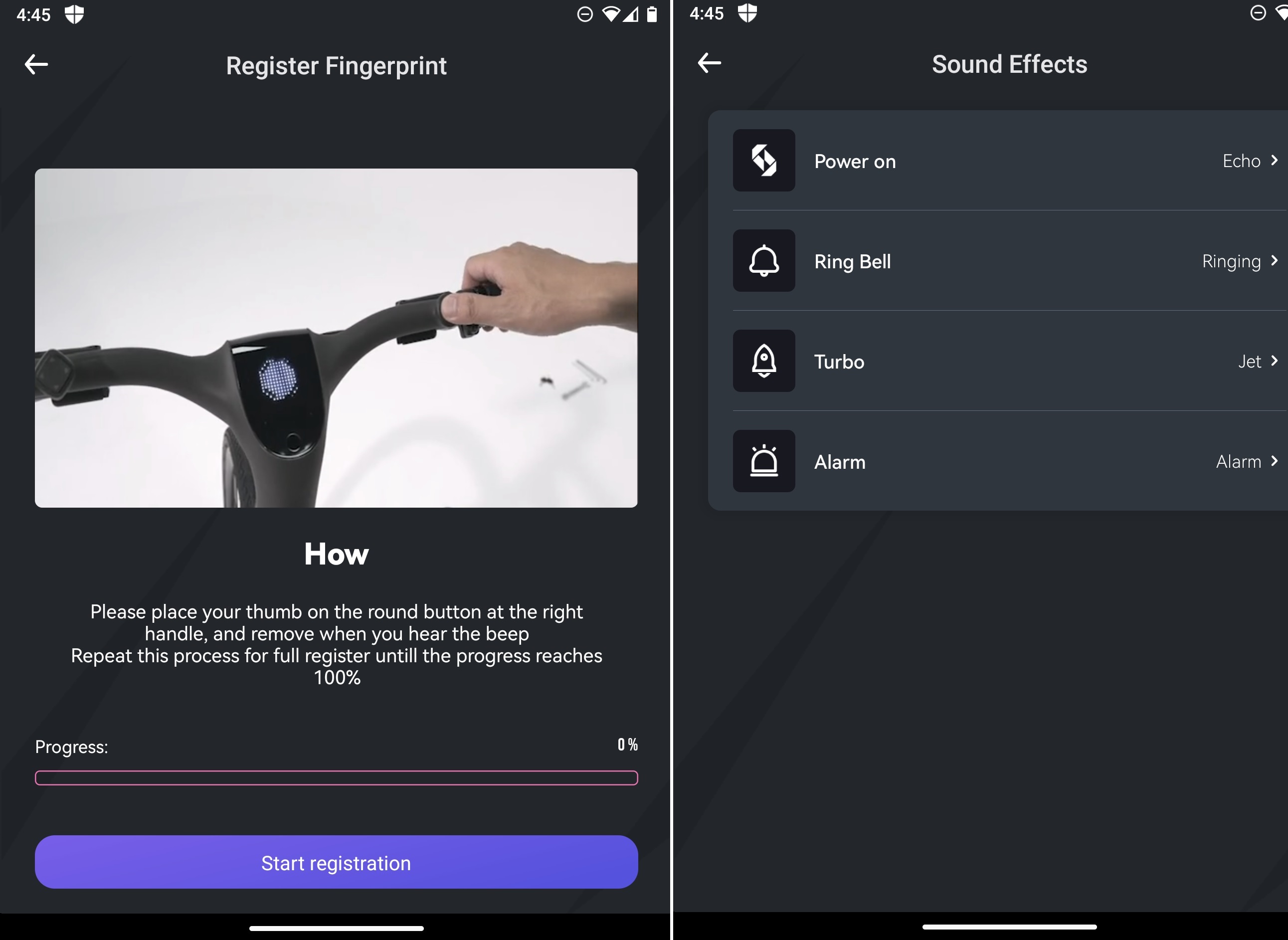
Changing levels is done via the left thumb controller – up to increase, down to decrease, and left/right to engage your rear blinkers. It’s all very intuitive.
Pressing the power button when the bike is on rings the “bell,” which is a clever addition. Setting the volume to level II or higher results in a deafening sound peaking at a whopping 92db, above a hair dryer and just below a helicopter.
The entire setup process was not only painless but quite fun. Urtopia is more of a smart device with a bike built on top of it, and there’s nothing like it on the market.
Here are just some of the things the Android and iOS apps can do with Urtopia:
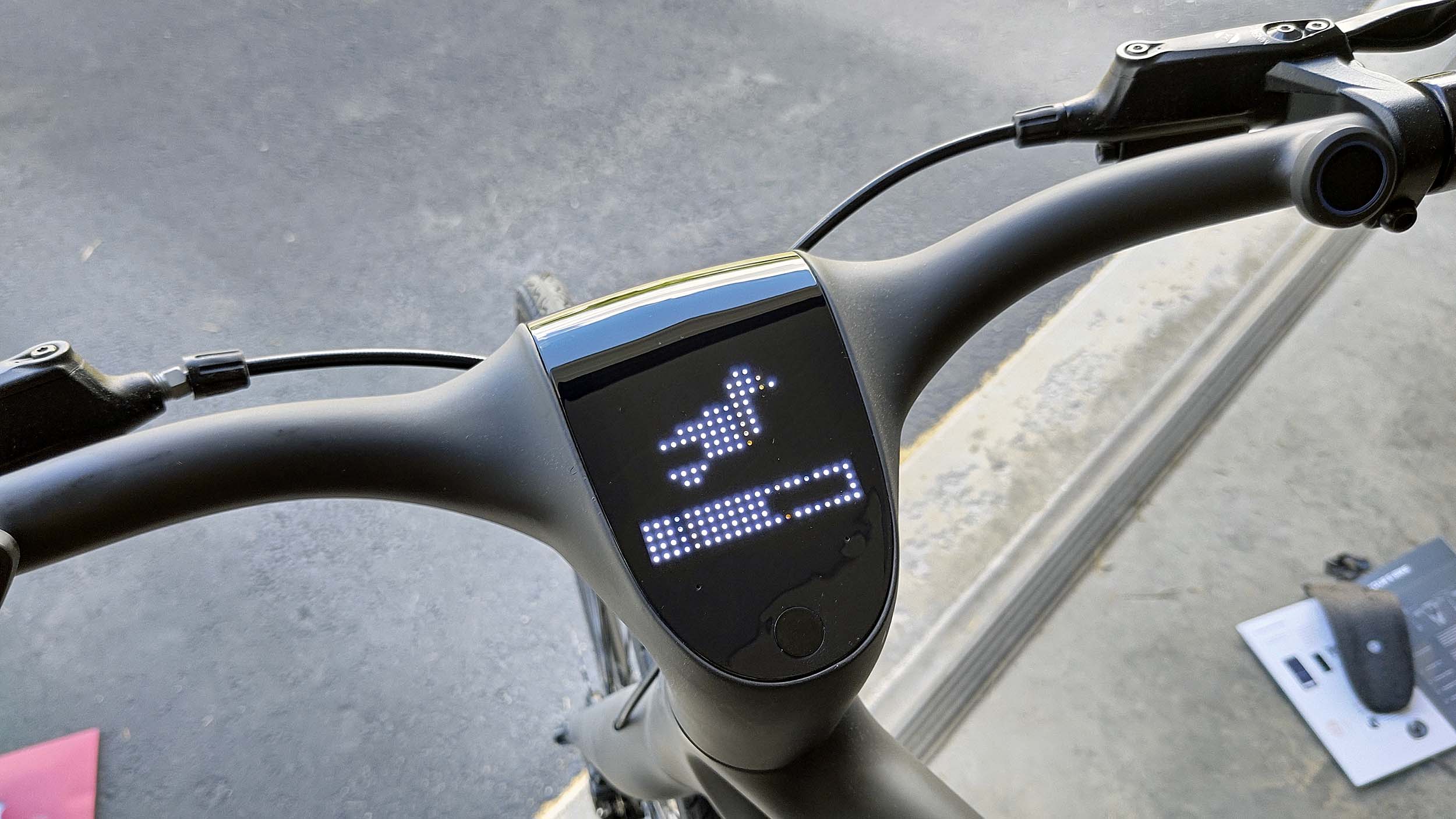
- Find my bike
- Alarm under mode “lock the bike”
- Track routes rode, including a “replay” of your ride with full data
- Battery status / Alarm of low battery
- Change volume
- Set lights on/automatic, rear braking
- Change sounds for level changes, bell, power on, and alarm
- Bike health diagnostic check
- Vibration level
There’s also just a lot of fun with the bike. You can change the bell ring to a dog barking or a horse nicker. To get to Turbo mode, you must hold and press “up” so you don’t accidentally engage it. Doing so shows an animated rocket taking off. That app itself is very gamified.
The company even added the classic game Snake, which can be experienced on the smartbar.
Adding to all this whizbang tech is also voice control. Hold the power button when the bike is on, and the display reveals a face awaiting your command. You can tell the cycle to change levels, toggle your lights, or even power down.
For the headlamp, you can have the bike auto-sense darkness and put your lights on automatically, an excellent safety and convenience feature.
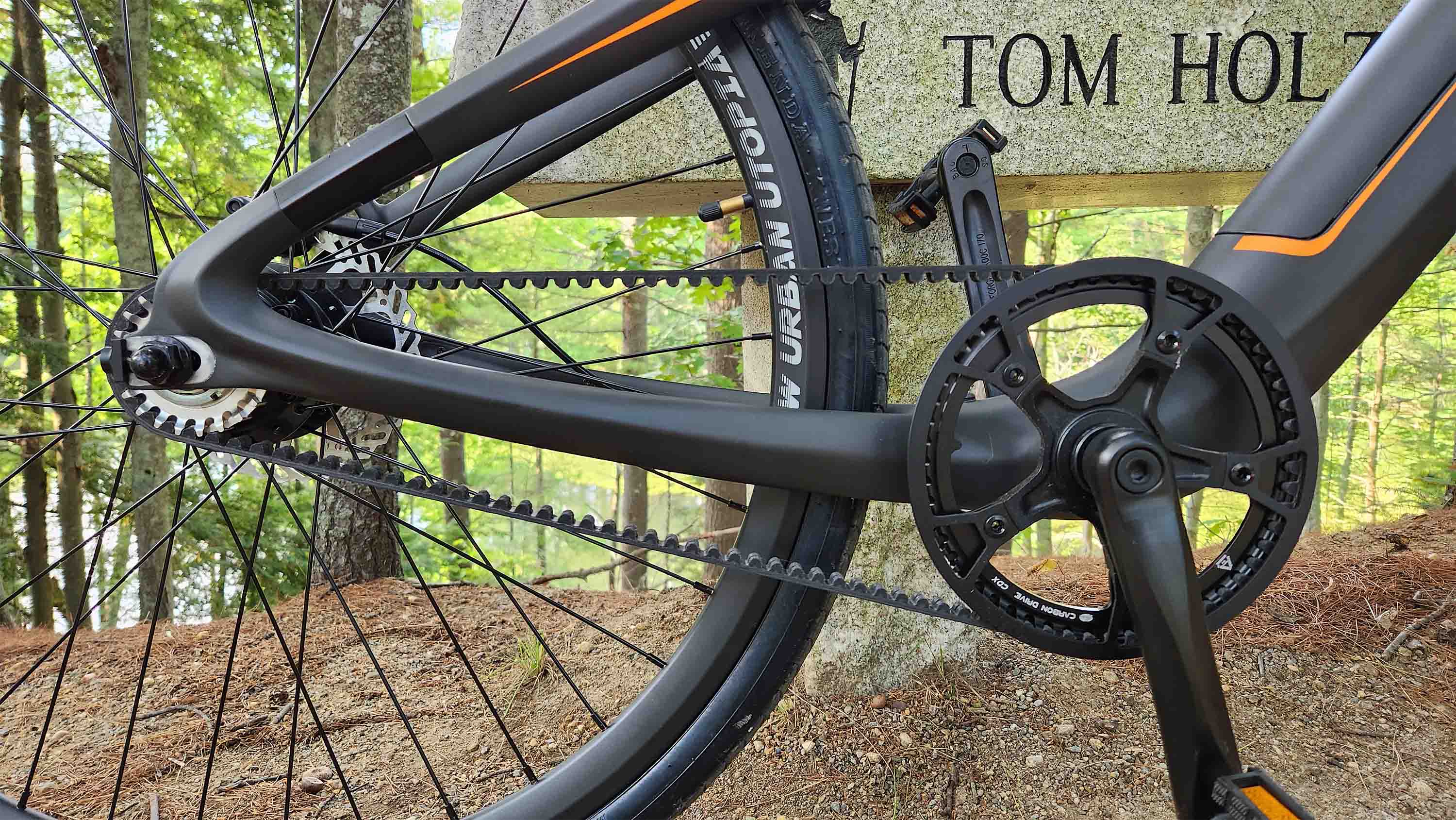
Find My Bike combines GPS and the eSIM so that if someone takes your bike, you can track it on a map to recover it. You have an excellent anti-theft system combined with the alarm, which engages if the bike is moved. Of course, you’d still want to lock the bike since anyone could take it, but these features give some peace of mind. Urtopia has even posted a real-world example of how this tech worked for one customer.
Hopping onto the bike, it all feels familiar, albeit more comfortable than my trusty Specialized Crosstrail. I was pleasantly surprised by the seat’s comfort, considering Urtopia offers an upgraded seat on its website for $59.
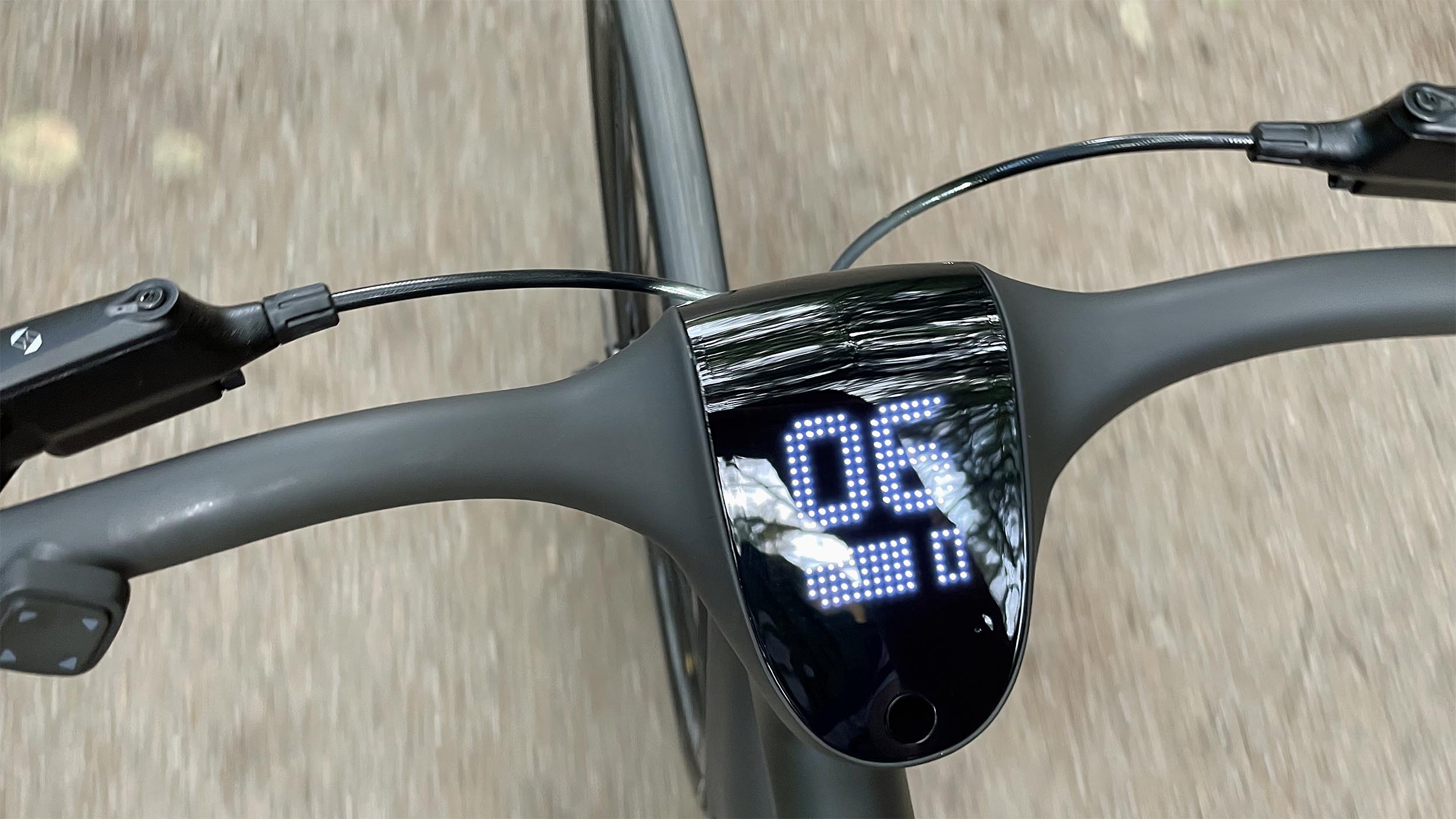
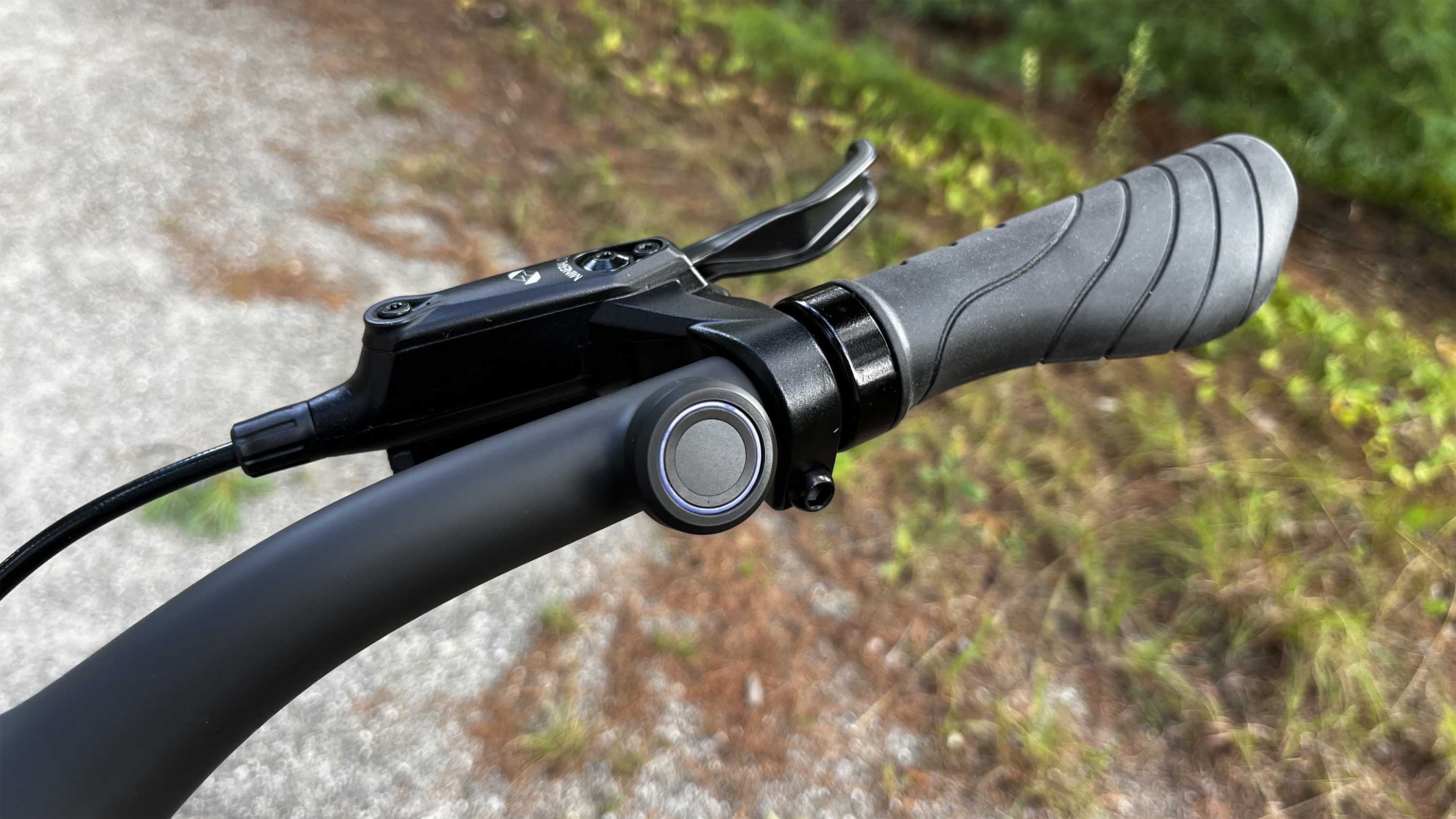
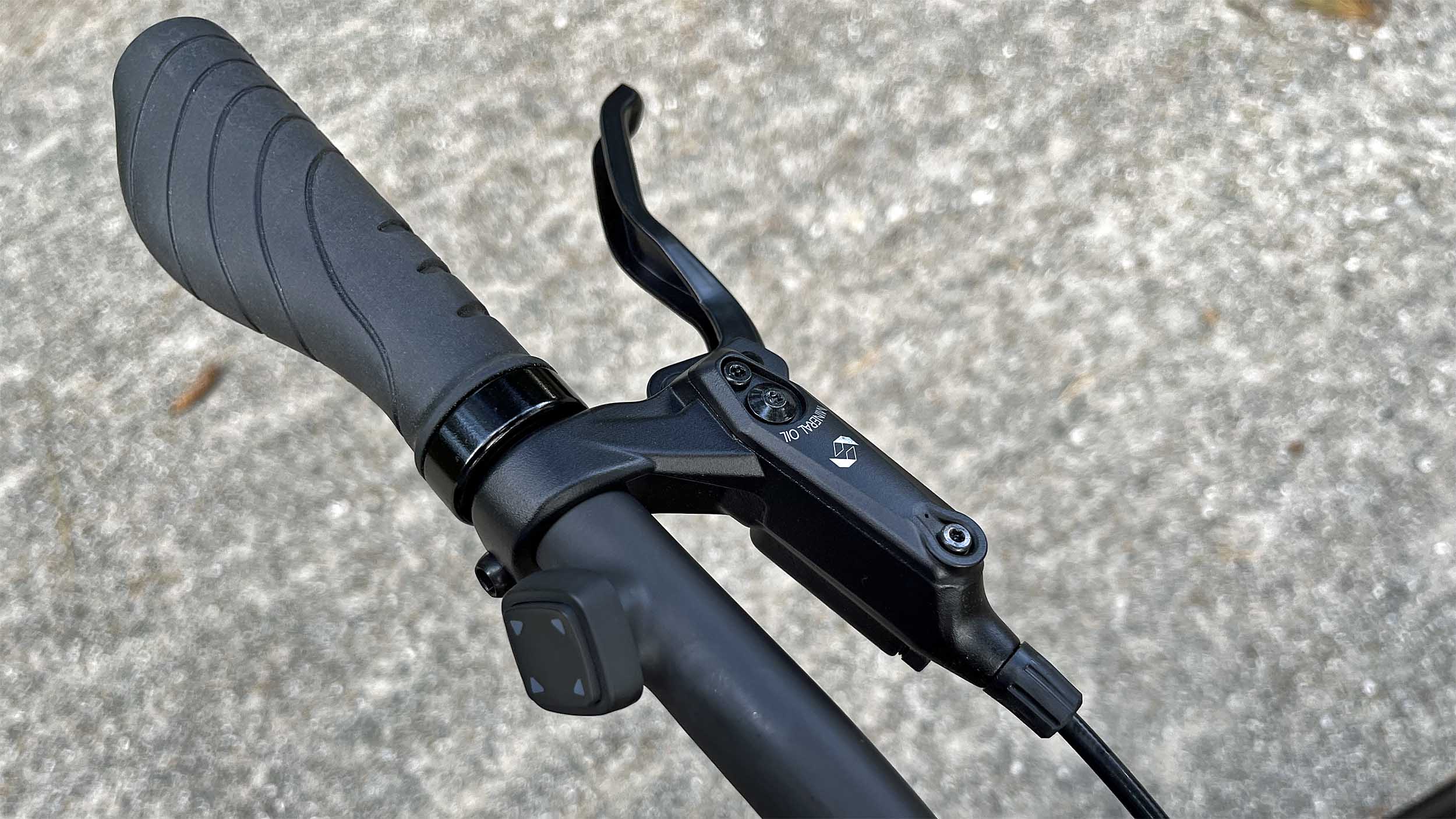
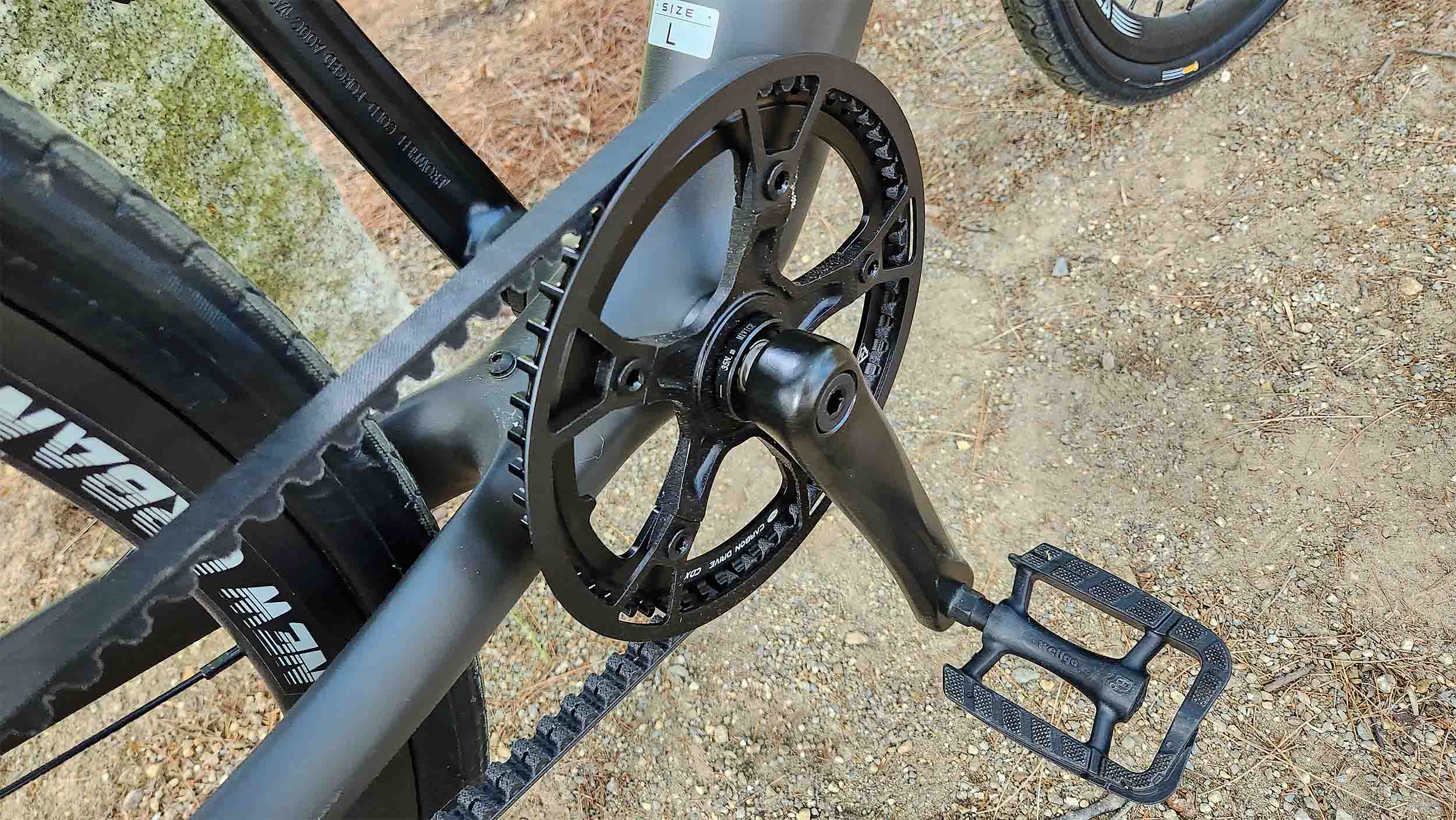
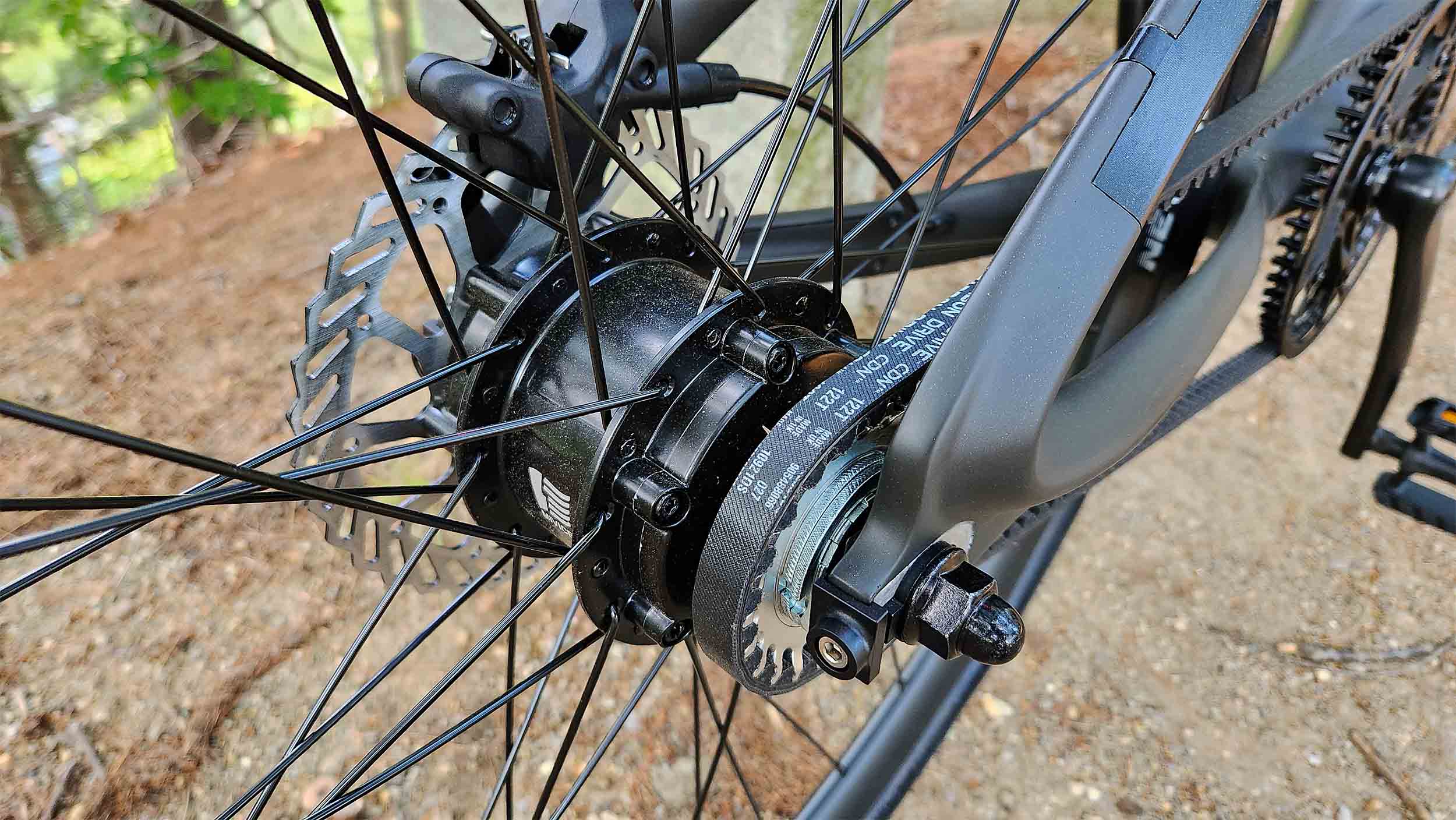
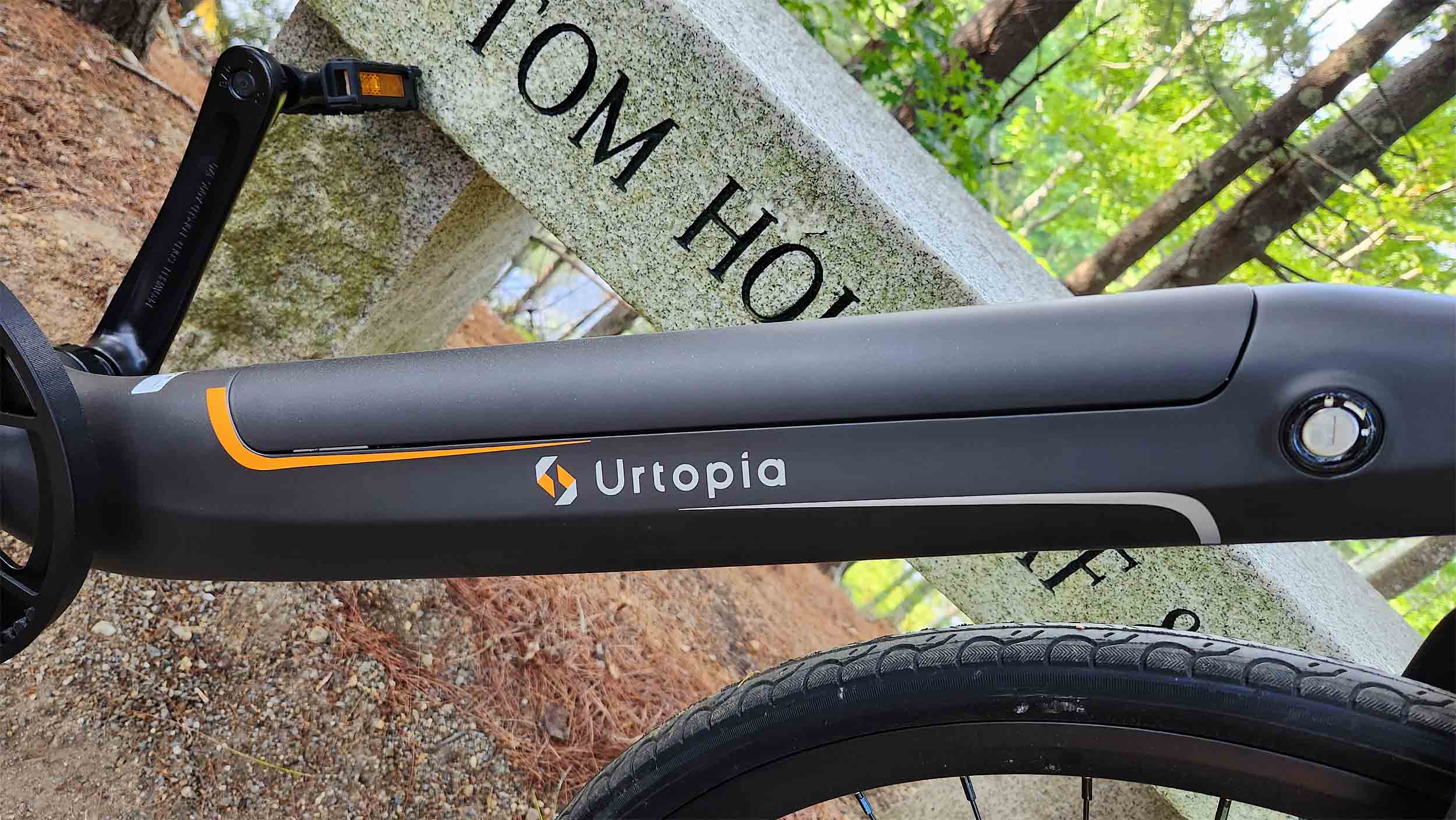
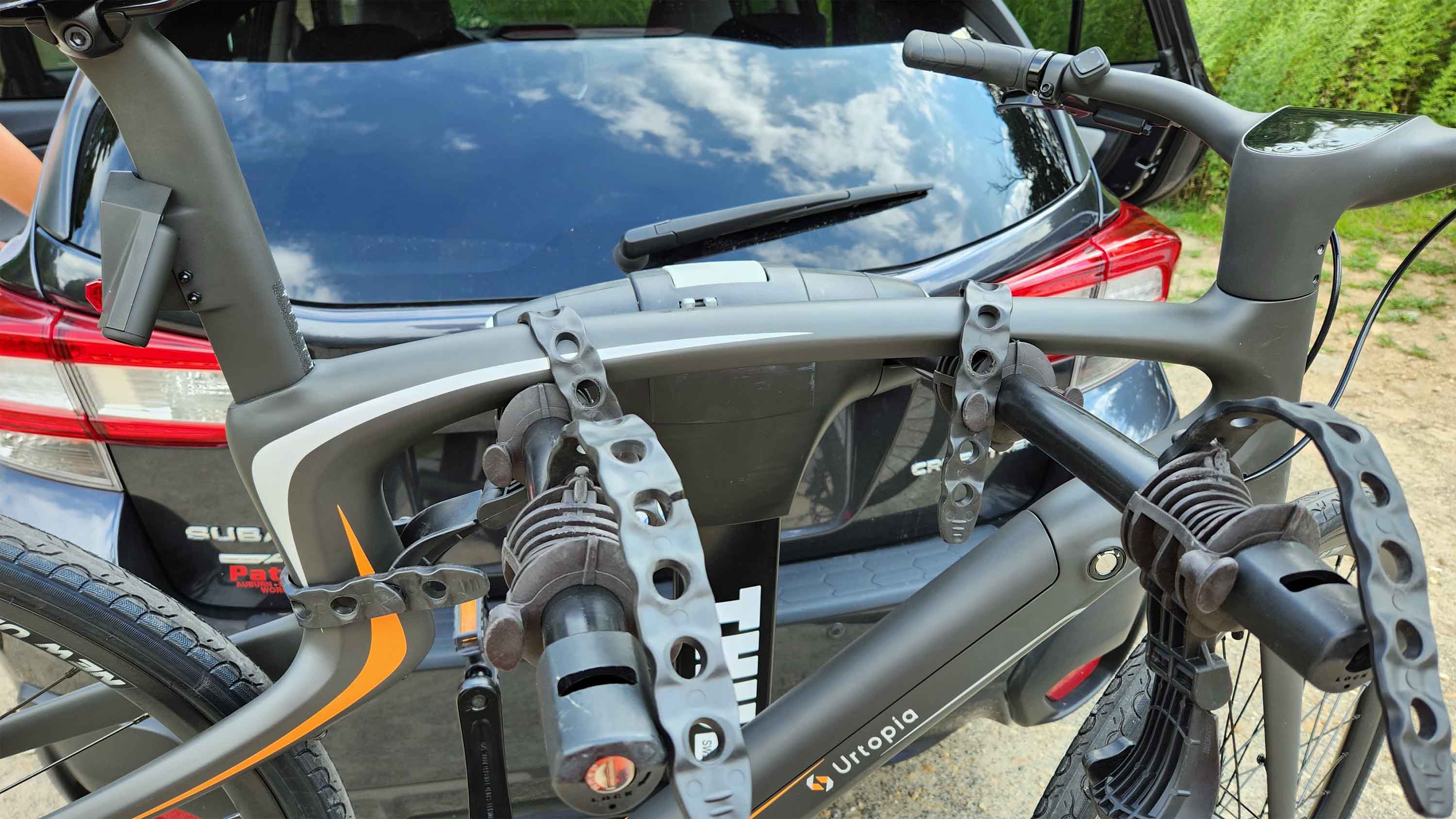
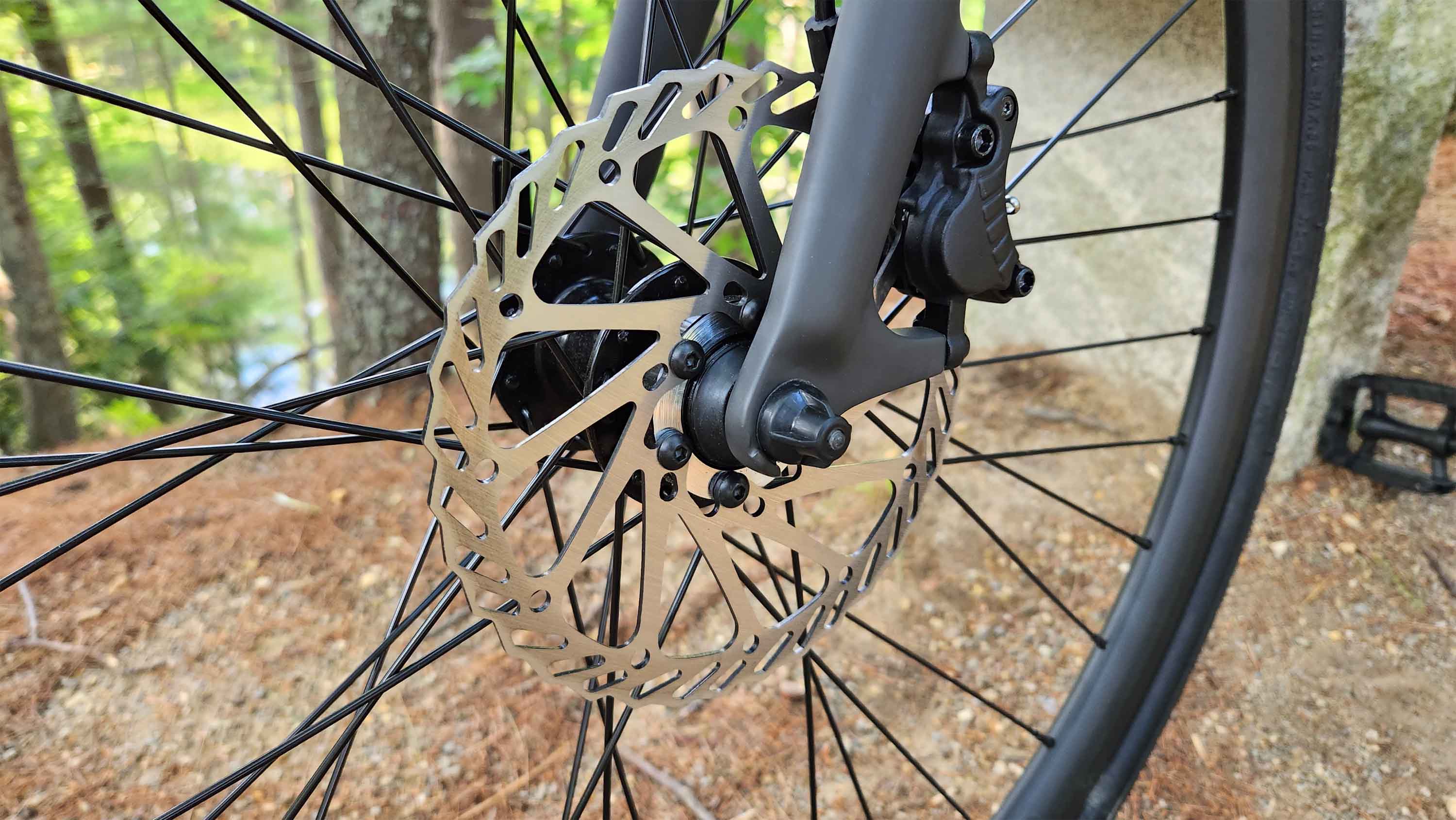
After riding the bike for over an hour on a semi-hard trail, I was smitten. I could ride the bike with pedal assist off with comfort, but when I hit a hill, just going to level 1 peddle-assist was enough to save my legs from extra hard work. Going to level 2 was more than enough speed for me where I could comfortably ride at 11+ mph. Turbo, where you can hit 20 mph, feels borderline too fast, and you should wear a helmet at that speed and have plenty of room to decelerate.
Despite the odd frame design, the Urtopia fit our Thule bike rack with no problems. With its light 33lbs weight, loading and unloading the bike (or carrying it up to an apartment) was a breeze.
Urtopia Carbon E-bike: What I don’t like

Assembly was fine, although I didn’t love fitting the seat in the frame with the power wire and nut system. It works, but it can be a bit tricky. I wouldn’t say no to rubber covers for a few exposed screw holes on the frame.
Speaking of the frame, it can scratch and scuff easily if you’re not careful. That’s made extra precarious since there is no kickstand included (you can buy an official one for $29), which I highly recommend. The same goes for a water bottle holder ($39), which is not included. That’s not unusual, as neither did my Specialized, but it’s something to consider.
Battery life in use is better than I expected, although, like most always-connected devices, if you leave the Urtopia unplugged for a few days, the battery will drain on its own. Most people won’t have an issue, especially since the battery is removable (so you can have a backup), but it’s something to consider if you don’t ride every day.
The thumbprint reader can also be finicky, but it worked about 90% of the time for me on the first or second try.
There are some concerns with support and warranty as Urtopia is a very new company. However, it seems to be reaching deals with bike shops in the US for test riding, sales, and maybe even servicing, which is a good start.
Urtopia Carbon E-bike: Should you buy?
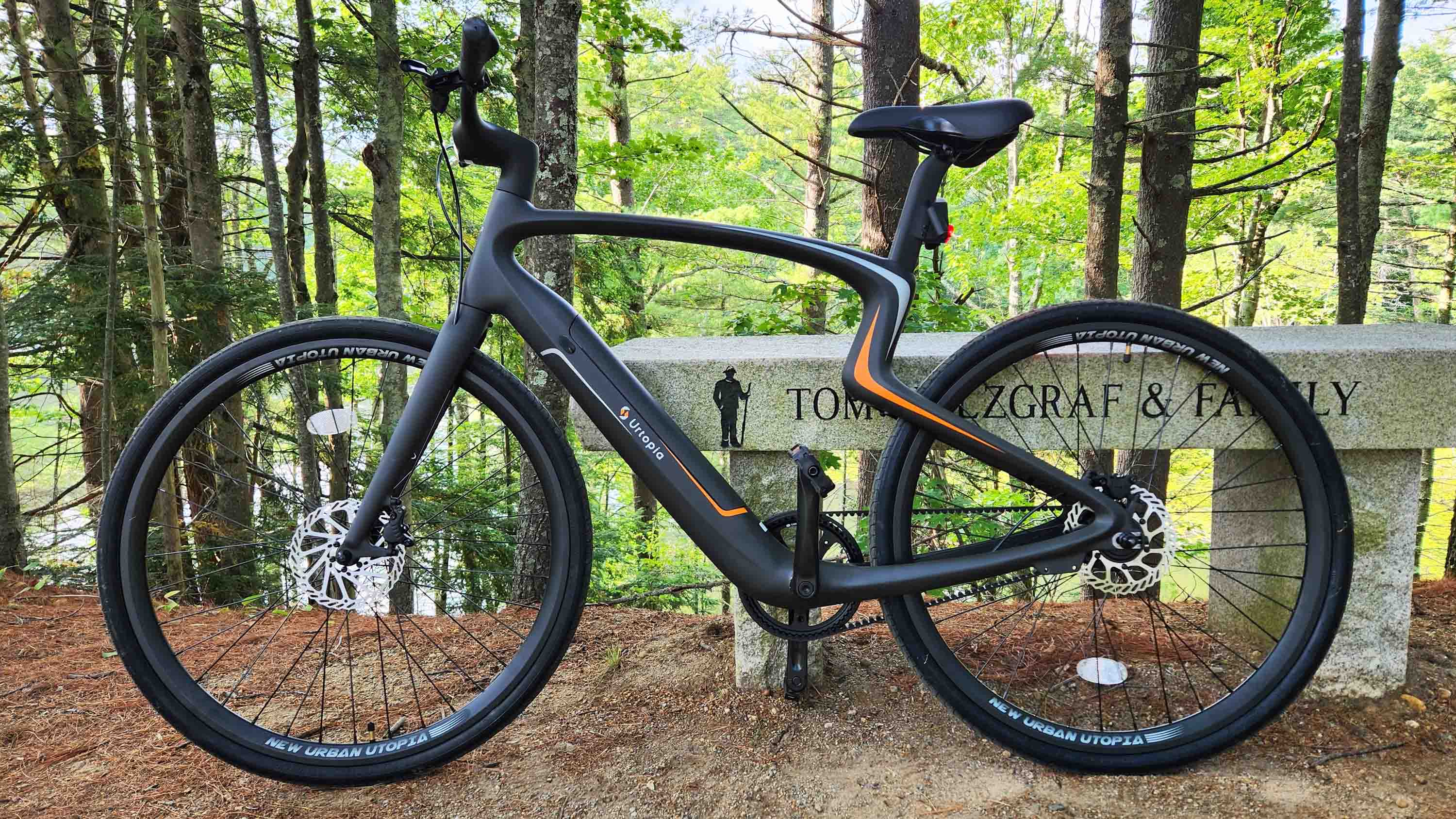
If you’ve used a smartphone, the Urtopia feels like one, except it’s an ultra-light, mid-range carbon fiber bike. Indeed, it reminds me of my Tesla Model 3, which also has highly configurable advanced software capable of receiving over-the-air updates. The software drives the experience, a big selling point for any techy person.
There are two things to consider with Urtopia if you’re interested in buying the bike. The price is both not cheap, but also very competitive. I mean that dropping $2,800 on a bike for most people is difficult, and for the occasional commuter, it will seem indulgent.
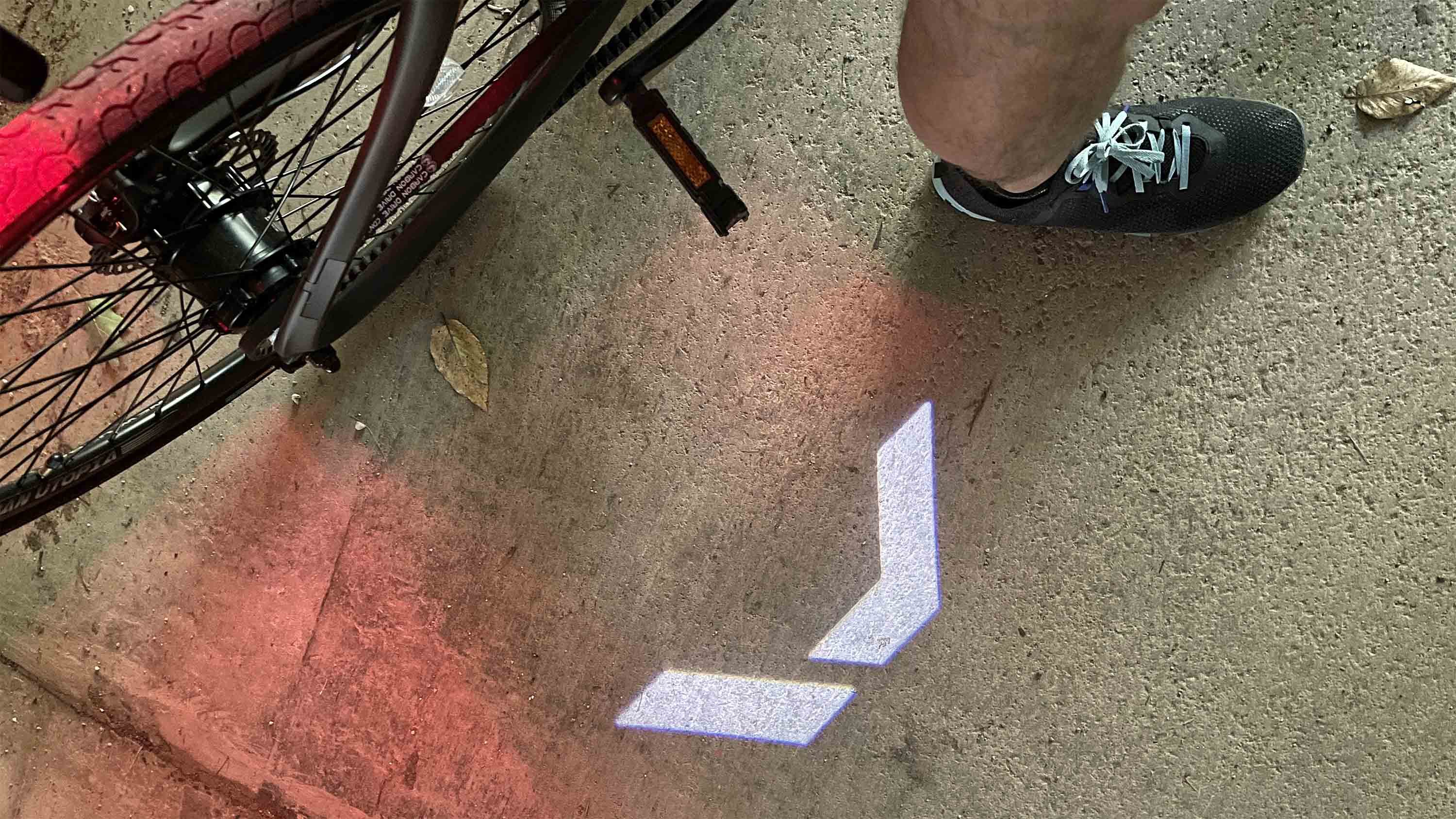
But, by comparison, most carbon fiber bikes cost $4,000 and more, and they don’t have anything close to the smartbar system that Urtopia brings, including built-in GPS, 4G LTE eSIM, and all the safety features.
That makes Urtopia a good value and easy to recommend if you want all its features.
All I know is that I haven’t had this much fun with a bike since I was a kid. It’s about time our bikes caught up with the rest of the tech world. This strategy worked for Tesla, and it should work for Urtopia.

Daniel Rubino is the Editor-in-chief of Windows Central. He is also the head reviewer, podcast co-host, and analyst. He has been covering Microsoft since 2007 when this site was called WMExperts (and later Windows Phone Central). His interests include Windows, laptops, next-gen computing, and wearable tech. He has reviewed laptops for over 10 years and is particularly fond of 2-in-1 convertibles, Arm64 processors, new form factors, and thin-and-light PCs. Before all this tech stuff, he worked on a Ph.D. in linguistics, performed polysomnographs in NYC, and was a motion-picture operator for 17 years.
